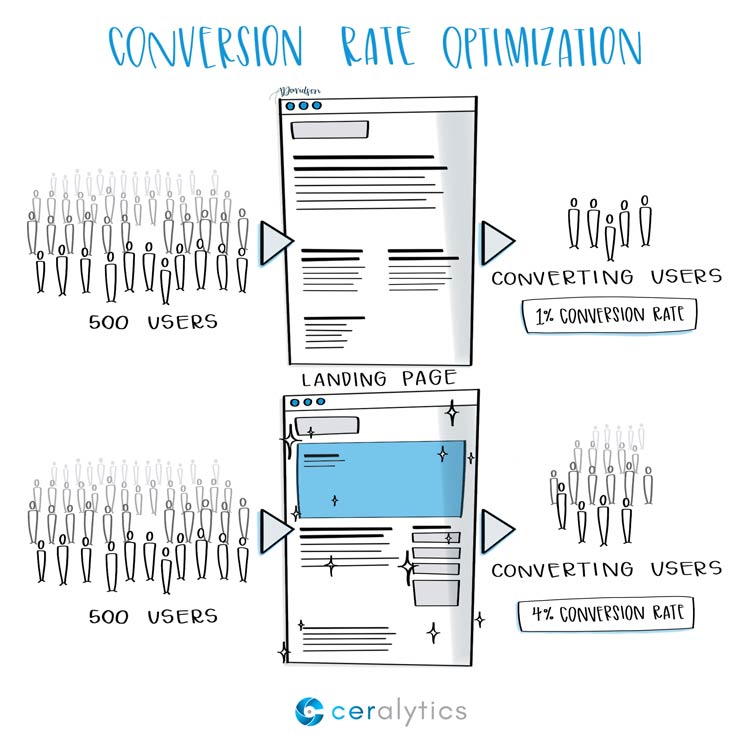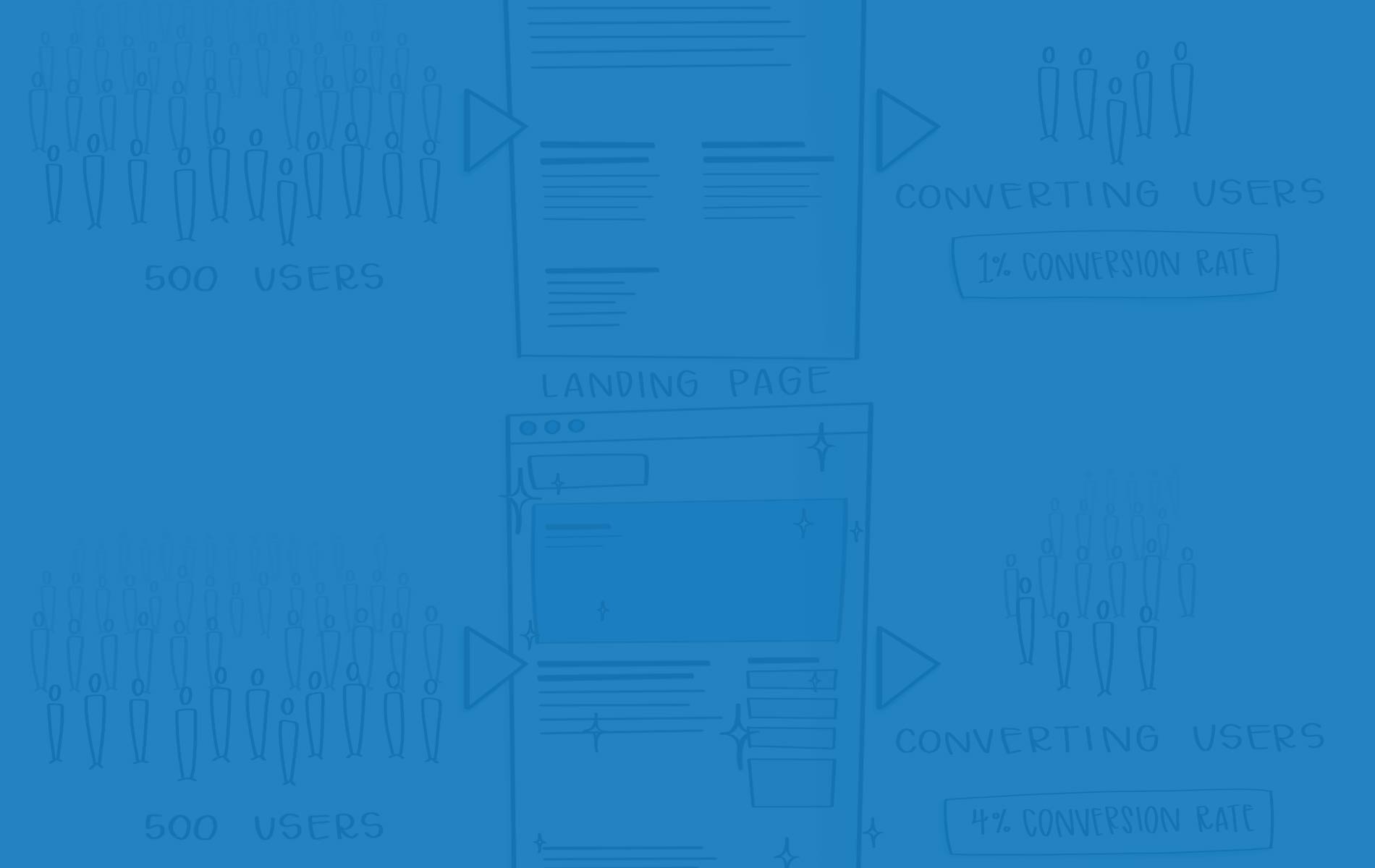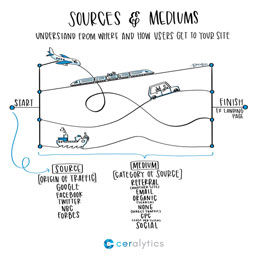Marketers spend huge amounts of time and money to get people to their websites. But if those audiences don’t convert to some kind of business goal, what is the point? This is where conversion rate optimization comes in.
Converting audiences from prospects to customers is no small task. So we’ve enlisted the help of our friend David Schroeder, Conversion Optimization Manager at CallRail, to lend his knowledge to this Sketchalytics.

What is Conversion Rate Optimization?
“In a broad sense, Conversion Rate Optimization is the process of adding things that increase the likelihood of a customer choosing you (or your product), and taking away things that decrease the likelihood of a customer converting,” says Schroeder.
To calculate conversion rate:
# of Conversions / # of Clicks (Visitors) to the site or landing page * 100% = Conversion Rate
Driving traffic to a site takes a lot of time and money. But overall success often comes down to the conversion rate of your site.
If you drive 10,000 people to your site, but only 0.01% of them convert, you’re left with only 1 conversion. If your goal is to get 10 conversions, you can either:
- Get 10 times the traffic to the site
- Increase the conversion rate from 0.01% to 0.1%
Many times, increasing the conversion rate is going to be a much more effective, and efficient method than trying to increase traffic tenfold.
How do you increase conversion rates?
Once someone is on your site, converting them to take a business action should become a priority. But what can you do to boost conversion rates?
“Things that increase conversion probability are trust, credibility, a great value proposition, a sense of urgency, and/or an incentive,” says Schroeder. “Things that decrease conversion probability are fears, reservations, confusion, and distrust.”
The key is to get into your potential customer’s mindset. You need to understand what motivates them. What their true pain points are.
“We can attempt to understand that through high-tech methods, like a Bayesian Statistical Analysis on the performance of two different web pages in an A/B test, and low-tech methods, like asking them!”
Presenting offers that don’t meet an audience’s pain points will have low conversion rates. But if an audience can see their pain point spelled out with a solution in front of them on your site, they are far more likely to convert.
Adds Schroeder, “This is why good Conversion Optimizers are, at their core, social scientists.”
What elements go into conversion rate optimization?
Conversion rates are impacted by a ton of variables. But here are a few places to start:
- Have a great value proposition
- Make sure you have a clear call to action (CTA) on your site
- Align your messaging across marketing & sales touch points
- Address point points/reservations on your site
- Building credibility/trust
- Ensure your analytics tracking is set up correctly
- Perform customer research
Tools you can use
Here are some tools you can use to help understand how your audiences interact with your site, and where you have opportunities to convert them at a higher rate:
- Google Tag Manager/Google Analytics
- Hotjar – Heatmapping tool
- Google Optimize
- Ceraltyics (<-You are here!)
- A/B Test Guide
Schroeder adds, “We use so many advanced analytics tools to understand our users and consumers, but Conversion Optimization is fundamentally a process of psychology. “
Next steps
Take a look at your website – especially your top landing pages. What can you do to increase their conversion rates that you notice right away? Are your calls to action noticeable? Are you addressing your audience’s true pain points? Are you making the audience the hero of the page?
Hopefully you can find some places to make improvements. And the great thing about conversion rate optimization is that even small improvements can have a huge impact.
About Sketchalytics
Each week we send out a micro-lesson in marketing and/or business.
Our goal is NOT to give you best practices to go out and do what other people do. You can get that anywhere.
Instead, our goal is to give you knowledge that you can apply to your own organization to make the best decisions possible.
If you know anyone who you think would benefit from Sketchalytics, please feel free to share this with them so they can sign up.


